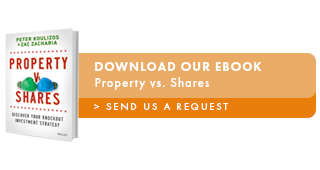There are changes aplenty in the superannuation space at present, but some things have stayed the same.
One of which is that there are still multiple benefits to running your own super fund, regardless of any changes to the general super landscape.
In fact, more and more Australians are opting to take control of their superannuation and setting up self-managed super funds (SMSFs) but before embarking on an SMSF get specific advice to ensure it is right for you.
And there are many reasons why they’re doing so.
Below is a list of 11 advantages of running your SMSFs:
1. A larger pool of funds
An SMSF allows a trustee to consolidate the super assets of up to four members (usually family members or business partners) into one larger pool of funds, which increases investment opportunities.
2. Flexibility with more investment options
SMSFs can provide flexibility with more investment options.
Trustees can invest directly in shares, high-yielding cash accounts, term deposits, income investments, direct property, unlisted assets, international markets, collectibles and more.
3. Tax effectiveness
Like all super funds, SMSFs benefit from concessional tax rates.
In the accumulation phase, tax on investment income is capped at 15 percent; in the pension phase, there is no tax payable, not even Capital Gains Tax.
Carefully considered tax strategies can help trustees grow their super savings and reduce tax payments as they transition to retirement.
4. Flexibility for multiple members
SMSFs allow greater flexibility for multiple members to run a mixture of accumulation and pension accounts.
Trustees can adjust their investment mix as it suits them, allowing for a fast response to changes in market conditions, super rules or personal circumstances.
5. The cost of administration could be reduced
While SMSF trustees must lodge an annual tax return and audit, and pay ATO fees, these costs are based on the time to prepare and not based on a percentage of your super balance.
This means the more an SMSF grows, the more cost-effective it becomes.
6. Increased transparency and control
You’re in control of your SMSF’s meaning you can choose where and how you invest and you will have a better understanding of where your money is invested, with complete visibility over performance and tax treatment.
7. You can increase the size of your nest egg through leverage.
8. You can purchase a residential property with debt.
9. Influence the valuation of properties
You may be able to influence the valuation of properties in your fund through cosmetic renovations and improvements using cash within the SMSF.
10. SMSFs can borrow to purchase your business premises
It’s important to understand that an SMSF member can’t live in a residential property owned by their SMSF. An SMSF can purchase a business property from a member (and the member can still use it), but it can’t purchase residential property from a member.
11. Estate planning
Having an SMSF provides the flexibility to plan who receives the member’s death benefits, when they receive them and how they receive them, such as a pension or lump sum.
It’s enlightening to learn that there are nearly 600,000 SMSF’s in Australia.
So that’s a lot of people in Australia who understand the benefits of controlling their superannuation.
It’s no secret, however, that the superannuation landscape can be complex.
That’s why many SMSFs access professional guidance before they establish their own super fund as well as during its duration.
Your circumstances and retirement goals will play a big part in what you both decide to do. Give us a call at 08 8231 4709 or send us an email at info@centrawealth.com.au to find out how we can help you achieve your financial goals.
Article courtesy of Michael Yardney’s Property Update.


